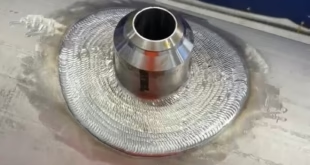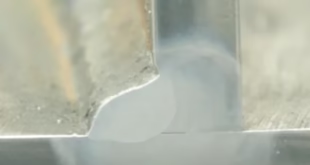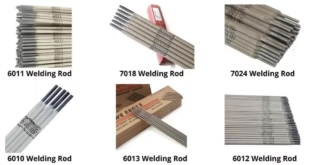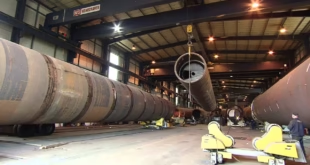Gas Welding – Acetylene vs Propane
Introduction
Definition of gas welding
Gas welding is a welding process that utilizes a flame produced by burning a fuel gas mixed with oxygen to generate the heat required for melting and joining metals. It is a widely used method for various applications, including welding, cutting, brazing, and heating.
Overview of gas welding using acetylene and propane as fuel gases
Acetylene and propane are commonly used fuel gases in gas welding. They are mixed with oxygen to create a flame that provides the heat necessary for the welding process. While both gases serve the same purpose, there are differences in their characteristics and suitability for different applications.
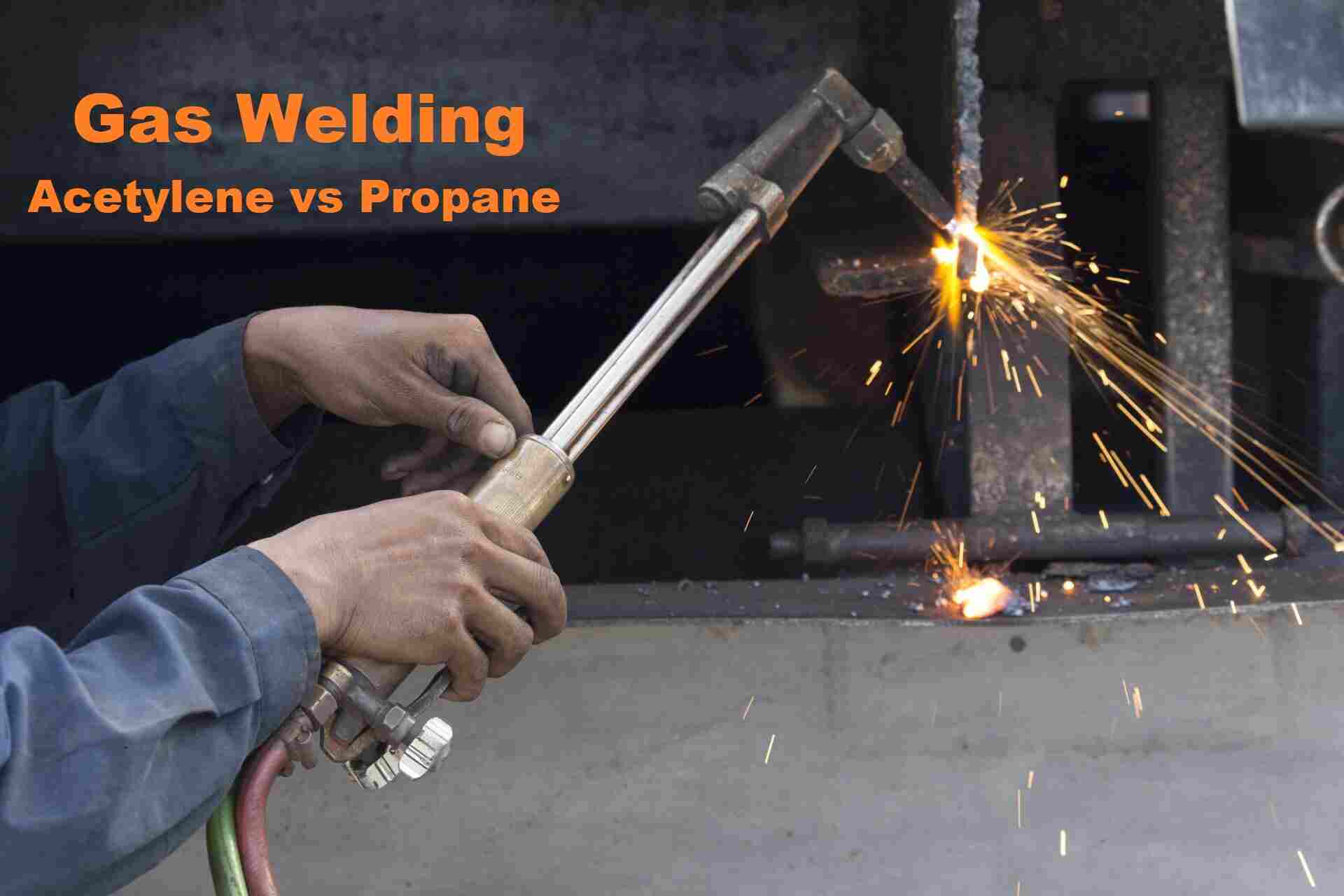
Comparison of Acetylene and Propane for Gas Welding
Advantages of Acetylene
- High flame temperature: Acetylene produces a high flame temperature, allowing for efficient metal melting and welding. The high temperature promotes faster welding speeds and better fusion between metals.
- Excellent heat transfer: Acetylene provides good heat transfer properties, making it suitable for welding thick metals and achieving deep penetration. It allows for effective heat distribution and helps in obtaining strong and durable welds.
- Versatility in applications: Acetylene is a versatile fuel gas that can be used not only for welding but also for other processes such as cutting and brazing. Its high temperature and heat concentration make it suitable for various applications in metalworking.
Disadvantages of Acetylene
- Safety concerns: Acetylene is highly flammable and can be unstable if not handled properly. It requires careful storage and handling to prevent accidents. Precautions such as appropriate cylinder storage and regulator usage are essential for safe operation.
- Higher cost: Acetylene is generally more expensive than propane. The production and transportation costs associated with acetylene contribute to its higher price, making it a less economical choice for some users.
- Limited availability: Acetylene may not be readily available in all areas, especially in remote locations. Its distribution requires specialized suppliers, which can limit its accessibility compared to propane.
Advantages of Propane
- Lower cost: Propane is typically more cost-effective compared to acetylene. Its availability and lower production and transportation costs contribute to its affordability, making it a preferred choice for users on a budget.
- Safer handling: Propane is less flammable and more stable than acetylene, making it easier and safer to handle. It has a wider flammability range, reducing the risk of accidental ignition.
- Widely available: Propane is widely available and can be easily sourced. It is commonly used as a fuel for various applications, including residential and industrial uses, making it accessible in many regions.
Disadvantages of Propane
There are relatively fewer disadvantages associated with propane as a fuel gas for gas welding. However, compared to acetylene, propane may have a slightly lower flame temperature, which can impact the speed and efficiency of welding, especially when dealing with thicker metals. Additionally, propane may require different equipment setups and adjustments compared to acetylene, necessitating careful consideration and adjustment of welding parameters.
In the comparison of acetylene and propane for gas welding, factors such as flame temperature, heat transfer, safety, cost, and availability should be considered when choosing the most suitable fuel gas for a particular application. It is important to select the gas that best meets the specific requirements and ensures safe and efficient welding operations.
Factors to Consider in Choosing Between Acetylene and Propane
Application requirements
The specific requirements of the welding application play a significant role in determining the suitable fuel gas. Factors to consider include the type of metal being welded, the thickness of the material, the desired welding speed, and the joint configuration. Certain applications may require the higher flame temperature of acetylene, while others may be adequately served by the properties of propane.
Safety considerations
Safety is of utmost importance in gas welding. The characteristics of the fuel gas impact safety considerations such as flammability, stability, and handling requirements. Acetylene is highly flammable and requires careful storage, handling, and ventilation to ensure safe operation. Propane, although less flammable than acetylene, still requires proper safety measures and awareness of its properties.
Cost considerations
The cost of the fuel gas is a significant factor to consider, particularly for long-term or high-volume welding operations. Acetylene is generally more expensive than propane, considering factors such as production, transportation, and availability. The overall cost of the welding process, including the fuel gas and associated equipment, should be evaluated in relation to the budget and cost-effectiveness of the project.
Availability and accessibility
The availability and accessibility of the fuel gas should be considered, especially in remote areas or regions where certain gases may be less readily available. Acetylene may have limited availability compared to propane, which is commonly used for various applications and widely available. Ensuring a consistent and convenient supply of the chosen fuel gas is essential for uninterrupted welding operations.
Comparison of Performance and Results
Flame temperature and heat transfer
Acetylene, with its higher flame temperature, provides efficient metal melting and welding. It enables faster welding speeds and improved fusion between metals. Propane, although slightly lower in flame temperature, still offers sufficient heat transfer for most welding applications.
Weld quality and penetration
The fuel gas used can influence weld quality and penetration. Acetylene’s high flame temperature and excellent heat transfer can result in deeper penetration and better fusion between metals, particularly when working with thicker materials. Propane, while providing adequate penetration, may require adjustments to welding parameters to achieve desired results.
Suitability for different metal thicknesses and types
The thickness and type of metal being welded play a role in determining the most suitable fuel gas. Acetylene’s higher flame temperature makes it advantageous for welding thicker materials, allowing for deeper penetration and efficient melting. Propane, although suitable for various metal thicknesses, may require adjustments in welding technique and parameters for optimal results.
Considering these factors and evaluating the specific requirements of the welding application will help in selecting the most appropriate fuel gas, whether it be acetylene or propane. Careful consideration of these factors ensures efficient and safe gas welding operations while achieving the desired weld quality and results.
Best Practices and Safety Guidelines
Proper handling and storage of acetylene and propane
Acetylene
- Store acetylene cylinders upright in well-ventilated areas.
- Ensure cylinders are securely fastened to prevent tipping or falling.
- Use approved cylinder caps and protective valve covers.
- Never transport acetylene cylinders horizontally or without proper protection.
Propane
- Store propane cylinders in well-ventilated areas away from ignition sources.
- Keep cylinders in an upright position and secure them to prevent tipping or damage.
- Use proper cylinder caps and valve protection devices.
- Follow local regulations for safe storage and handling of propane cylinders.
Use of appropriate equipment and regulators
Acetylene
- Use acetylene-specific regulators, flash arrestors, and flashback prevention devices.
- Inspect and maintain regulators regularly to ensure proper functioning.
- Avoid using acetylene regulators with propane or other fuel gases.
Propane
- Use regulators, hoses, and fittings designed for propane gas.
- Ensure proper connections and check for leaks before starting welding operations.
- Regularly inspect and maintain equipment to ensure safety and optimal performance.
Adequate ventilation and safety precautions:
- Ensure proper ventilation in the work area to prevent the accumulation of flammable gases.
- Use flame-retardant protective equipment, such as gloves, aprons, and goggles, to protect against sparks, heat, and welding fumes.
- Have fire extinguishing equipment readily available and know how to use it.
- Maintain a clean and organized workspace to reduce the risk of accidents and injuries.
Training and certification for gas welding operators:
- Gas welding operators should undergo proper training and certification programs to ensure they have the necessary knowledge and skills to perform welding operations safely and effectively.
- Training should cover gas welding techniques, equipment operation, safety protocols, hazard identification, and emergency procedures.
FAQs
What is propane in welding?
Propane is a fuel gas commonly used in gas welding. It is mixed with oxygen to produce a flame that provides the heat necessary for metal melting and welding.
Can you weld metal with propane?
Yes, propane can be used for welding metal. When combined with oxygen, it creates a flame with sufficient heat to melt and join metal pieces together.
What is the difference between propane and acetylene?
Propane and acetylene are both fuel gases used in welding, but they have different properties. Propane has a lower flame temperature compared to acetylene. It is also less flammable and generally considered safer to handle. Acetylene, on the other hand, has a higher flame temperature and better heat transfer, making it suitable for welding thicker materials.
Which is safer, propane or acetylene?
Propane is generally considered safer than acetylene. Propane is less flammable and more stable, reducing the risk of accidents during storage and handling. Acetylene, although highly flammable, can be safely used with proper precautions and adherence to safety guidelines.
What is propane called?
Propane is a colorless, odorless gas. For safety purposes, an odorant called ethanethiol or ethyl mercaptan is added to propane, giving it a distinctive odor that is often described as a “rotten egg” smell.
What are the two types of propane?
There are not two distinct types of propane. Propane itself is a single chemical compound (C3H8) and does not have different types. However, it can be stored in different forms such as liquid propane (LPG) or compressed propane gas.
Why is propane better than acetylene?
Propane is considered better than acetylene in certain aspects. It is generally more cost-effective and widely available compared to acetylene. Propane is also safer to handle due to its lower flammability and stability. However, acetylene has a higher flame temperature and better heat transfer, making it advantageous for certain welding applications.
What gas is used in gas welding?
Gas welding typically involves the use of fuel gases combined with oxygen to create a flame. Common fuel gases used in gas welding include acetylene, propane, natural gas, and hydrogen.
Is LPG a propane?
Yes, LPG stands for “liquefied petroleum gas,” and propane is one of the main components of LPG. LPG is a mixture of hydrocarbon gases, primarily propane and butane, which are commonly used as fuel gases in various applications, including welding.
What is the safest welding gas?
Argon is considered one of the safest welding gases. It is an inert gas commonly used in gas tungsten arc welding (GTAW) or TIG welding. Argon is non-flammable, non-toxic, and does not react with most materials, making it a safe choice for welding operations.
Can you use propane with oxygen?
Yes, propane can be used with oxygen in gas welding processes. The mixture of propane and oxygen creates a flame with sufficient heat for metal melting and joining. However, it is important to use the appropriate equipment and follow safety guidelines when working with propane and oxygen mixtures.
Why is acetylene used in gas welding?
Acetylene is commonly used in gas welding due to its high flame temperature and excellent heat transfer properties. Its high heat concentration allows for efficient metal melting and welding. Acetylene is often preferred for applications that require high-quality welds, deep penetration, and the ability to work with thick materials.
Conclusion
In conclusion, the choice between acetylene and propane for gas welding ultimately depends on various factors and considerations. Both gases have their own advantages and disadvantages, and understanding these differences is crucial in making an informed decision.
Acetylene has long been the preferred gas for welding due to its high flame temperature, allowing for efficient and rapid welding. It provides excellent heat output and can easily reach temperatures required for welding thick metals. Acetylene also offers good control over the flame, making it suitable for precise welding applications. However, it does come with some drawbacks. Acetylene is highly combustible and requires careful handling and storage. Its production and transportation can be more expensive, and it may have certain regulatory restrictions due to safety concerns.
On the other hand, propane has gained popularity as an alternative fuel for gas welding. It is less expensive than acetylene and is readily available. Propane is also easier to handle and store as it does not require special cylinders. While its flame temperature is slightly lower than acetylene, propane can still achieve sufficient heat for most welding tasks. Additionally, propane burns cleaner and produces fewer harmful emissions compared to acetylene, making it more environmentally friendly.
When deciding between acetylene and propane for gas welding, it is essential to consider the specific requirements of the welding project. Factors such as the thickness of the metals being welded, the desired welding speed, the cost considerations, and the availability of gases should all be taken into account. For heavy-duty and high-temperature welding applications, acetylene may be the preferred choice. Conversely, propane can be a suitable option for lighter welding tasks or when cost and environmental considerations are priorities.
 Welding of Welders All about Welding and Welders
Welding of Welders All about Welding and Welders
